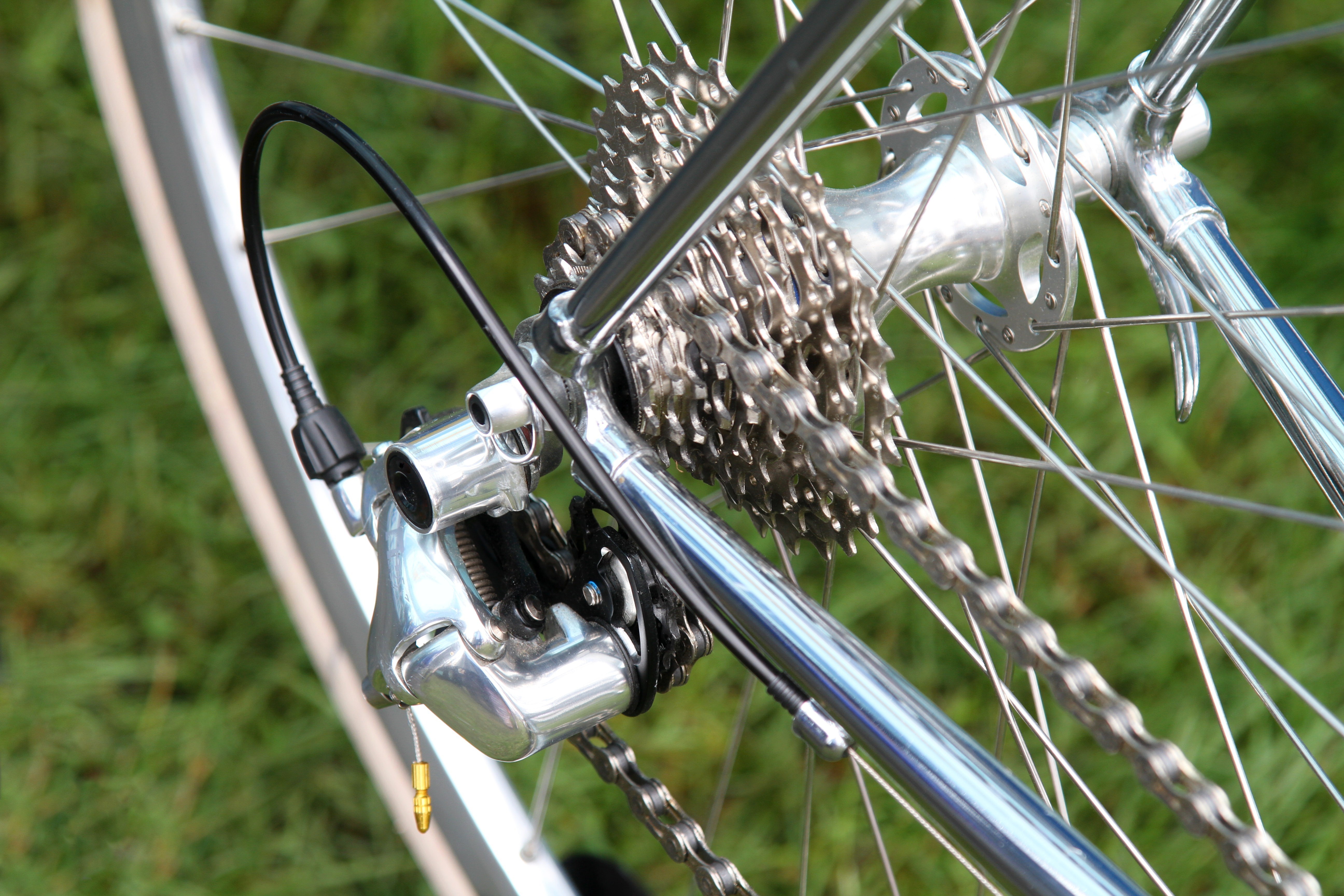
This article is part of a series called ‘A love letter to…’, where Cycling Weekly writers pour praise on their favourite cycling items and share the personal connection they have with them. The below content is unfiltered, authentic and has not been paid for.
Shiny stuff. There's a reason us cyclists, two-wheeled magpies that we are, continue to profess to love it. Essentially, shiny stuff looks great. Hung from a bike it flashes by on the road like an exploding firework, or glints in the sun with the promise of expensive jewellery. Who needs a Rolex when your bike is dripping with Campagnolo C-Record?
Thing is, there is very little shiny stuff left on bikes these days. In its place, we have black. Often matt black at that. It has become the colour of choice for groupsets – from rear mechs to front brake calipers; for wheels, spokes and all, and finishing kits. Curiously, only tyres seem to be bucking the trend, having reverse-manoeuvred towards a retro tan-wall aesthetic.
With many frame finishes also matt, or at least featuring a shot-peened look these days, modern components fitted to a dark-coloured bike often result in a machine so akin to a black hole that it's in danger of sucking up all the workshop tools and crushing them within its dark depths.
I have nothing against black components per se. They can look attractively stealth with their Mad Max chic. They start to look dirty more slowly if ridden in all weathers and they generally look pretty smart anyway.
At what point though, was the decision taken to do away with polished alloy, seemingly all together?
Anomalous black components have existed as far back as the 1970s. And there are few Eighties kids whose cycle catalogues did not fall readily open on the page featuring the black-gold exotica that was the 12-speed Raleigh Record 'racer'. I can vouch for that one myself.
The modern wholesale conversion to black began at the start of this century when Campagnolo began to introduce carbon cranks and brake levers – of course, black was the only colour they could be. Soon enough, the Italian manufacturer was producing alloy components in the same colour, presumably to mimic the premium look of its carbon pieces. By 2008, Shimano had released an all-black version of its 105 5600 group, and we were well on the way.
Black isn't the only finish that manufacturers have dabbled in. My own first serious bike – an early-Nineties Raleigh Volant in Reynolds 531, sported Shimano RX100 brake calipers in a rather dubious combination of white and grey. It was one of two groupsets produced around the time in the colour – the other being Shimano's Sante. They vanished as quickly as they appeared. Praise be.
But here we are in 2024 with seemingly only one colour to choose from when it comes to groupset components (the odd item from Stronglight for example being the exception). It's all getting rather dreary.
These things go in circles though, and surely we have stared into the component-based abyss for long enough now. Personally I'm ready for a choice, at least. When that comes along I'll be first at the top of the queue, eager to once again own a silver bullet that catches the eye and catches fire in the sun. Let's just hope Shimano doesn't try the white again instead.







